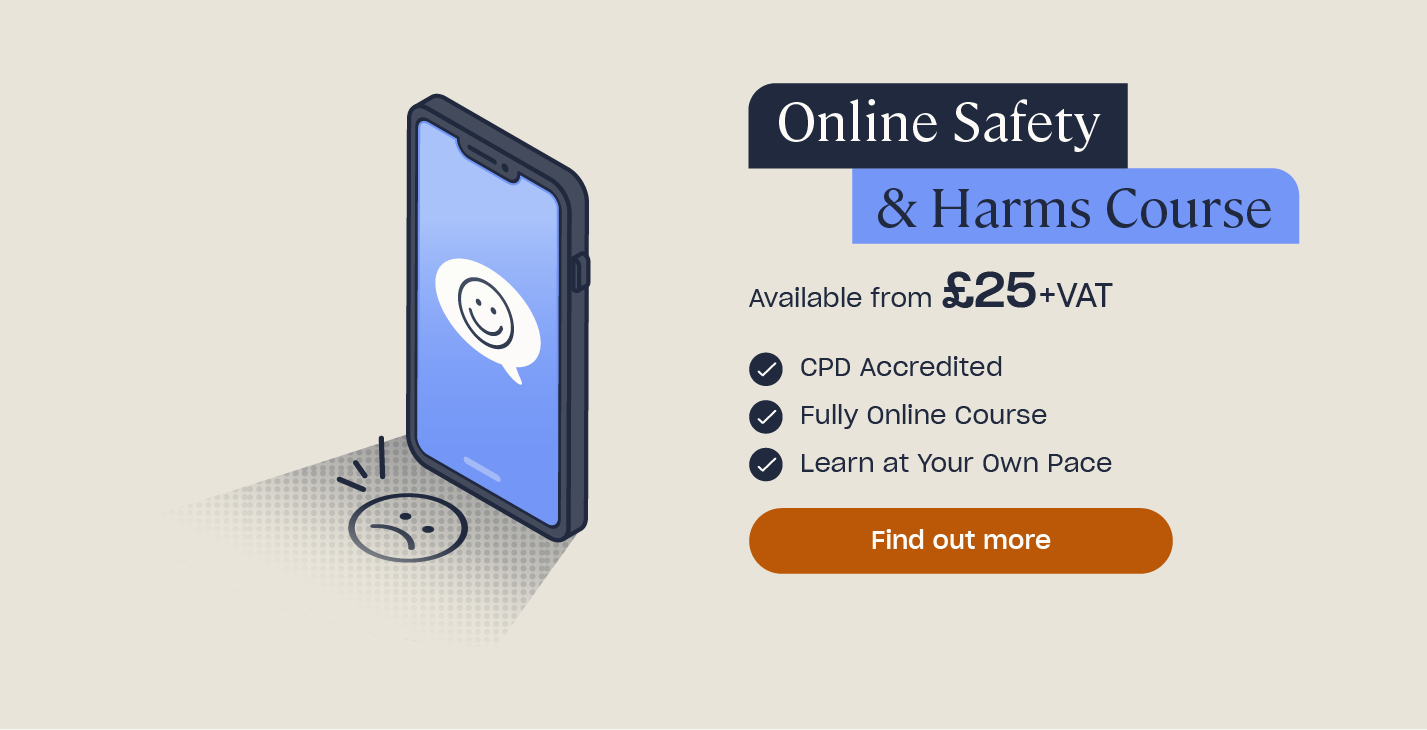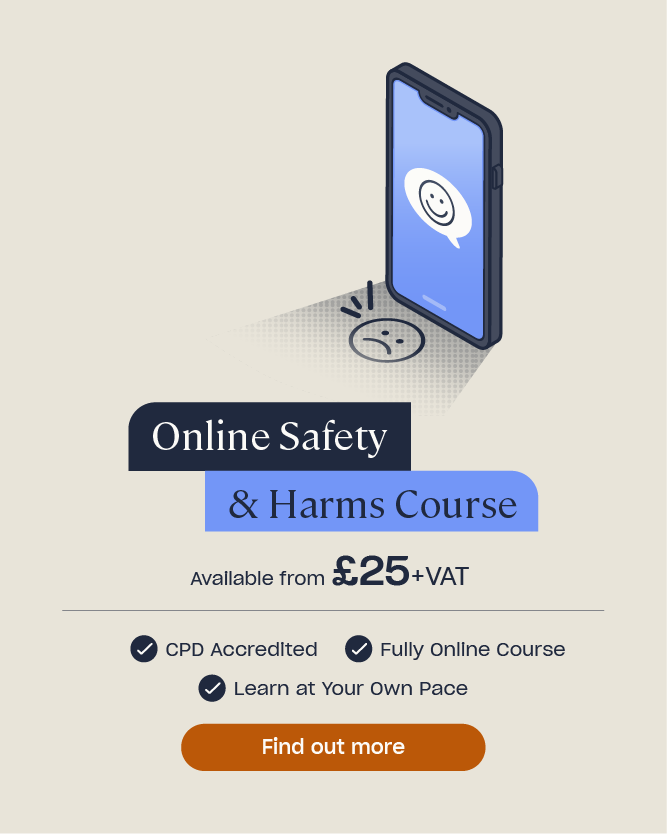Online Safety and Harms Quiz
Test Your Online Safety and Harms Knowledge
Being online has become an important part of our daily lives, even for very young children. This means that the safeguarding risks to the children and young people that you work with have become even more widespread and complex than they were even a few years ago. As education professionals, you need to feel confident in your knowledge of potential online risks and harms. Have a go at our Online Safety and Harms quiz to see how much you know.
According to Keeping Children Safe in Education, what are the 'four Cs' of online risk?

The four Cs of online risk are Content (being exposed to illegal, inappropriate, or harmful content), Contact (being subjected to harmful online interaction with other users), Conduct (online behaviour that increases the likelihood of, or causes, harm) and Commerce (risks with a financial implication).
What percentage of eight- to eleven-year-olds use social media sites or apps?

According to Ofcom research 44% of eight- to eleven-year-olds use social media sites or apps.
What is the term for content that only stays on sites or apps, such as Snapchat, for a short time?

Ephemeral content is that which only remains for a short time. However other users can potentially copy or film this content and then repost or circulate it online.
'The use of technologies by an individual or a group of people to deliberately and repeatedly upset someone else.' This defines which type of online risk?

This definition refers to online bullying, also known as cyberbullying. According to the Office for National Statistics (2020) one in five young people have experienced online bullying.
Which age group are often particularly targeted for child criminal exploitation (CCE) due to the fact that they are not considered ‘criminally responsible’?

Because they are not considered legally responsible, children under 10 years old are often particularly targeted for child criminal exploitation.
A young person sharing a semi-nude photograph of their 15 year-old ex-partner in a class group chat, is an example of what?

This scenario would be an example of all three of these online harms.
In which year did the World Health Organization recognise gaming disorder (also known as gaming addiction)?

It was in 2018 that the WHO recognised gaming disorder. The NHS opened their first dedicated Centre for Internet and Gaming Disorders in 2019.
In school, who should be your first point of contact for any potential online safety safeguarding concerns that you may have about a young person?

Your DSL should be your first point of contact for safeguarding concerns within school.
According to the DfE, what percentage of teachers reported having derogatory comments made about them on social media sites from both children and parents?

As teachers, your own online safety is also very important. Teachers are also susceptible to online harm. DfE figures found that 21% of teachers reported having derogatory comments made about them online.
‘Online relationships’ and ‘Being Safe’ are areas of learning covered in which primary programme of study?

The Relationships Education programme of study contains those particular areas of learning. Curriculum content relating to online safety can be found within Relationships, Sex and Health Education, Computing and Citizenship statutory programmes of study.
Share your Results:
Further Resources:
- Online Safety & Harms Course
- Safeguarding Against Child Exploitation and Abuse: A Resource Pack for Schools
- How Much Do You Know About Internet Safety? KS2 Quiz
- Internet Gaming Safety: Tips for Parents
- Internet Safety Posters for Schools
- Screen Time for Children: Advice for Parents
- Mobile Phones in Schools Debate: Advantages and Disadvantages











